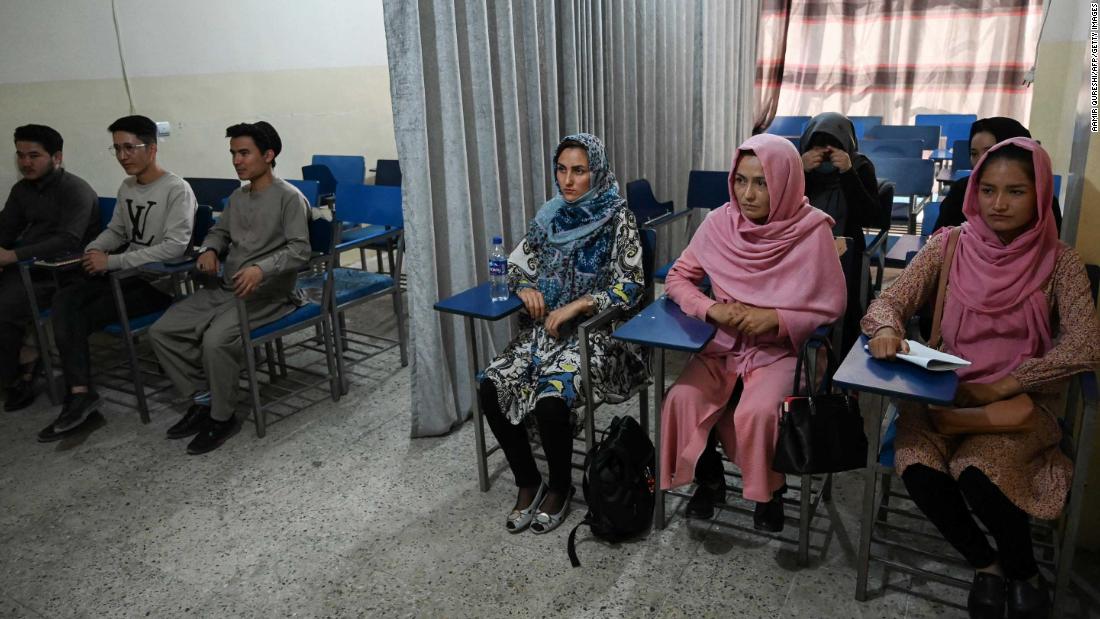
Take a look at what education could be like in Afghanistan under Taliban rule, as this week some students returned to the classrooms to begin the new school semester.
Photos shared on social media of the first college classrooms opened after the U.S. withdrawal include women, but with striking differences.
The Taliban-led Ministry of Education has approved a proposal, submitted by the Afghan University Trade Union, which represents 131 colleges, on the separation of male and female students.
Under the proposal, women and men must enter their learning place through separate entrances. Mixed classes are only allowed when the number of students is less than 15 and the classroom must be divided by a curtain.
The newly created proposal states that newly created classes in private universities should be separate for boys and girls. And all universities are required to designate a separate area so that female students can perform their prayers.
In addition, “all women students, teachers and employees are required to observe the hijab according to Sharia,” the proposal said. The hijab covers the hair but not the face.
“In the future, universities should try to hire teachers for students. In the meantime, efforts should be made to appoint senior professors known to be reliable for teaching students,” the proposal continued.
Waheed Roshan, vice-chancellor of Bakhtar Private University in Kabul, said the institution would comply with the proposal, but added that for many schools logistics would be a challenge.
He told CNN that Bakhtar (where approximately 20% of the 2,000 students are girls) could take classes for boys and girls in separate shifts. But other universities may have difficulty putting partitions into their classrooms, Roshan said.
“Better stay home”
There was a mixed response from female students to educational changes. Sahar, 21, who studies political science, told CNN she was glad the Taliban had not banned girls from attending higher education, but described the new rules as extreme.
“There are so many female students in Kabul who grew up in a free environment where they had the opportunity to choose what to wear and what university to attend or whether to sit in a classroom with the boys or not, but now it would be hard for them to adapt. be to these extreme rules, ”he said.
Sahar said that even before the Taliban took over, the girls wore modest clothes and did not see the need for new restrictions. She also said she would try to resume her studies under the new rules, but she wasn’t sure if she could continue for a long time.
Ziba, another student in her 20s in Kabul, said she planned to drop hopes of graduating from college because of the security situation and because the Taliban could impose stricter conditions in the future. He said it was better to stay home.
Ziba asked CNN not to use his real name.
But 19-year-old Mina Qasem, who graduated from high school last year, said she was excited to start college. “I’ll wear any kind of hijab they ask me for, as long as I keep college open to girls. I’m very excited to start the next chapter of my life and my sister who will finish high school this year will. I too. bid on one of the private universities at the end of the year “.
Mina said that if the girls wanted to have a voice in the future, they had to be educated no matter what the circumstances.
No CNN collaborator has been appointed outside Afghanistan for security reasons. CNN’s Sheena McKenzie contributed to this report.